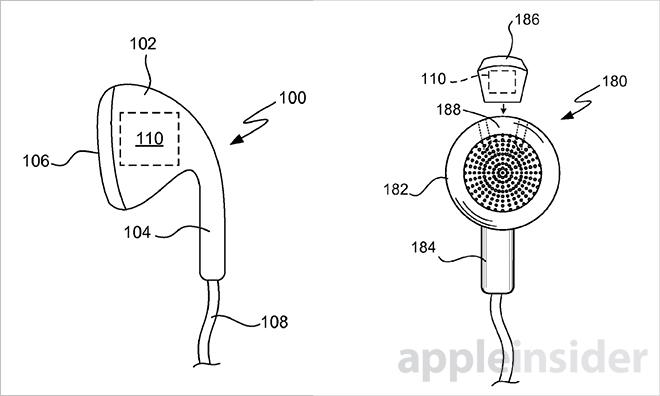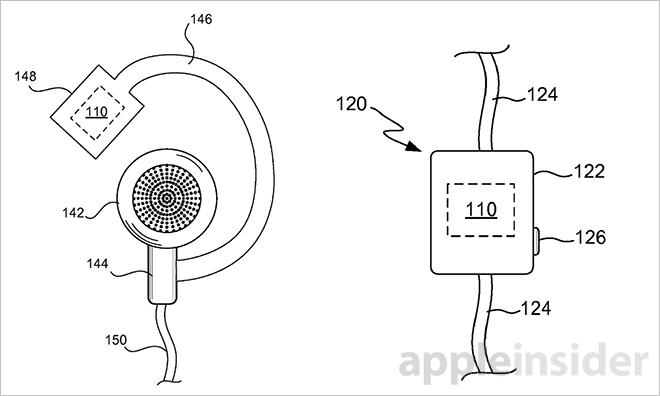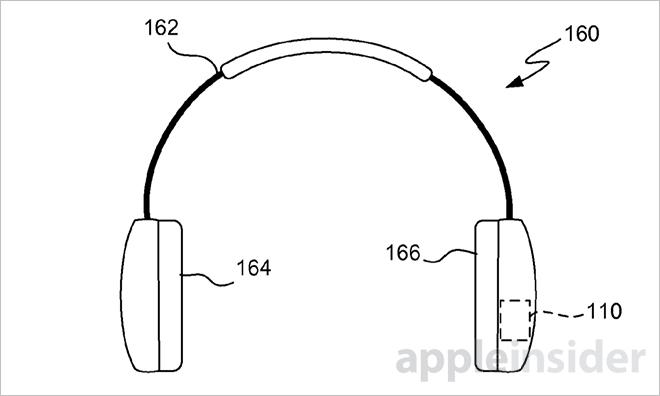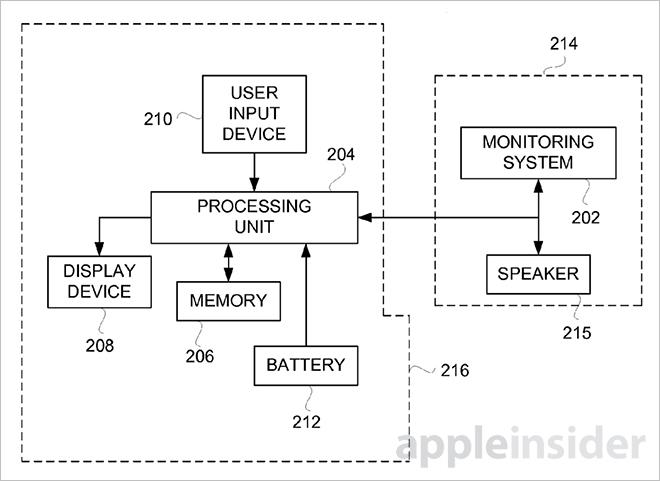In one of the earliest pieces of evidence pointing to Apple's push into the fitness and health monitoring field, the U.S. Patent and Trademark Office on Tuesday granted the company a patent for a biometric headphone system that can sense a variety of metrics including temperature, heart rate and perspiration levels.
Claiming priority over a provisional patent application filed for in 2007, Apple's U.S. Patent No. 8,655,004 for a "Sports monitoring system for headphones, earbuds and/or headsets" proves the company has been investigating integrated activity monitors for at least six years.
According to the patent, the fitness monitoring system is cleverly ensconced in a set of headphones, something users commonly wear to listen to music during workouts. By positioning the headset in or near the ear, the embedded activity sensor can pick up temperature, perspiration and heart rate data, among other metrics.
In addition to skin-based readings, an accelerometer may also be incorporated into the earbud chassis to facilitate the collection of accurate movement data. Some embodiments call for multiple accelerometers, each corresponding to a different axis.
As described, the activity sensor can be housed in the upper or lower portions of an earbud. As seen in the above illustration, an integrated solution would place the sensing apparatus wholly within the earbud frame. The solution would negate the need for users to wear or carry a separate piece of equipment, such as a smartwatch.
Not detailed in the patent is the means by which heart rate, perspiration and other physical data is harvested. Apple has a number of other properties describing embedded electronic sensors that interact with a user's skin, including an invention covering cardiac signal collection as transferred by an iPhone's external metal structures.
While mere speculation, Apple could potentially embed a conductive metal ring into the earbud, or perhaps position the activity sensor to facilitate touch with a user's bare skin. On the latter implementation, the patent points to a loop-style earbud that fixes the activity sensor in the boom arm rather than the headphone frame. Alternatively, the sensor may be a detachable component that fits into the earbud when needed.
As the activity monitor also incorporates accelerometers, Apple proposes a novel means of hands-free navigation involving head gestures. For example, users can change music tracks and adjust volume by tilting or rotating their head in predefined manners. To avoid accidental activation, a priming procedure like a button press may be used to initiate the gesture sequence.
In other embodiments, the activity sensor can be mounted within an inline housing on the headset cord. This implementation appears to be limited to motion data gathering, however, as no contact with the user's skin is noted.
Apple points out that the headphone unit may be wired or wireless, with the latter leveraging Bluetooth connectivity to transfer data back to the host device like an iPhone.
While the majority of the patent covers activity sensing, mention is made of a "psychological" sensor. It is possible that Apple could apply specialized algorithms information gathered by the built-in biometric sensor to create a general picture of a user's mental state. The feature could be something akin to Phyode's W/Me wrist-worn wellness device, which measures a user's autonomic nervous system via EKG electrodes.
With rumors swirling over a so-called "iWatch," Apple has made a number of recent hires from the medical sensor and health industry, leading many to believe the company is working on a standalone monitoring device.
Apple's sports monitoring headphone patent was first filed for in 2008 and credits Christopher Prest and Quin C. Hoellwarth as its inventors.
 Mikey Campbell
Mikey Campbell










-m.jpg)






 Christine McKee
Christine McKee
 Malcolm Owen
Malcolm Owen
 Marko Zivkovic
Marko Zivkovic

 Andrew Orr
Andrew Orr
 Andrew O'Hara
Andrew O'Hara
 William Gallagher
William Gallagher





-m.jpg)



28 Comments
I just wish Apple would invent some headphones that wouldn't keep falling out of my ears.
...In addition to skin-based readings, an accelerometer may also be incorporated into the earbud chassis to facilitate the collection of accurate movement data. Some embodiments call for multiple accelerometers, each corresponding to a different axis.
MEMs accelerometers are typically tri-axial, so, three axes in a single unit. A tri-axial gyro then gives an unambiguous rotational as opposed to mistaken translational signal, providing at least 6 degrees of freedom.
A special pair of health sensor packed headphones for the iPhone makes more sense than a special purpose watch product. I think there might have been medical headphones mentioned at CES this year too.
[quote name="kidmillion" url="/t/162080/apple-patents-sensor-packed-health-monitoring-headphones-with-head-gesture-control#post_2473621"]I just wish Apple would invent some headphones that wouldn't keep falling out of my ears.[/quote] [URL=http://store.apple.com/us/product/ME186LL/A/apple-in-ear-headphones-with-remote-and-mic?fnode=75]These don't do that trick for you?[/URL] [IMG ALT=""]http://forums.appleinsider.com/content/type/61/id/38553/width/350/height/700[/IMG]
Good idea from Apple. Increase the number and function of sensors in the things people already use instead of forcing them to adopt additional pieces of hardware.